The compound 1- (N-ethyl-N-methyl)- propanamine forms non-superimposable mirror images . But this compound does not show optical activity because of the :
Absence fo a chiral (N) atom
Prersence of chiral (N) atom
Presence of lone pair on (N) atom
Rapid filipping of one form into the another
The correct Answer is:D
To solve the question regarding the optical activity of the compound 1-(N-ethyl-N-methyl)-propanamine, we will analyze the structure and the concept of chirality in detail.
1. Identify the Structure:
- The compound 1-(N-ethyl-N-methyl)-propanamine consists of a propanamine backbone with an ethyl and a methyl group attached to the nitrogen atom.
- The structure can be represented as follows:
CH3−CH2−N(CH3)−CH2−CH3
2. Determine Chirality:
- A chiral center is typically a carbon atom bonded to four different substituents. However, in this case, the chiral center is the nitrogen atom.
- The nitrogen atom has three different substituents: an ethyl group (C2H5), a methyl group (CH3), and a propyl group (C3H7) along with a lone pair of electrons.
3. Mirror Image Formation:
- The compound can form non-superimposable mirror images due to the presence of the chiral nitrogen atom. This means that if you were to create a mirror image of the compound, it would not be possible to overlay the two structures perfectly.
4. Optical Activity:
- Generally, compounds that have non-superimposable mirror images are optically active. However, in this case, the compound does not exhibit optical activity.
- The reason for this is that the nitrogen atom can rapidly interconvert between its two configurations due to the presence of the lone pair of electrons. This rapid flipping or inversion prevents the compound from being stable in one specific chiral form.
5. Conclusion:
- Although the compound has a chiral nitrogen atom, the rapid interconversion between its mirror images means that it does not maintain a stable chiral configuration. Therefore, it does not exhibit optical activity.
Final Answer:
The compound 1-(N-ethyl-N-methyl)-propanamine does not show optical activity despite forming non-superimposable mirror images because of the rapid flipping (inversion) of the nitrogen atom, which leads to interconversion between the two forms.
- The compound 1-(N-ethyl-N-methyl)-propanamine consists of a propanamine backbone with an ethyl and a methyl group attached to the nitrogen atom.
- The structure can be represented as follows:
CH3−CH2−N(CH3)−CH2−CH3
- A chiral center is typically a carbon atom bonded to four different substituents. However, in this case, the chiral center is the nitrogen atom.
- The nitrogen atom has three different substituents: an ethyl group (C2H5), a methyl group (CH3), and a propyl group (C3H7) along with a lone pair of electrons.
- The compound can form non-superimposable mirror images due to the presence of the chiral nitrogen atom. This means that if you were to create a mirror image of the compound, it would not be possible to overlay the two structures perfectly.
- Generally, compounds that have non-superimposable mirror images are optically active. However, in this case, the compound does not exhibit optical activity.
- The reason for this is that the nitrogen atom can rapidly interconvert between its two configurations due to the presence of the lone pair of electrons. This rapid flipping or inversion prevents the compound from being stable in one specific chiral form.
- Although the compound has a chiral nitrogen atom, the rapid interconversion between its mirror images means that it does not maintain a stable chiral configuration. Therefore, it does not exhibit optical activity.
The compound 1-(N-ethyl-N-methyl)-propanamine does not show optical activity despite forming non-superimposable mirror images because of the rapid flipping (inversion) of the nitrogen atom, which leads to interconversion between the two forms.
Topper's Solved these Questions
- ORGANIC COMPOUNDS WITH FUNCTIONAL GROUPBOOK - CENGAGE CHEMISTRY ENGLISHCHAPTER - ORGANIC COMPOUNDS WITH FUNCTIONAL GROUPEXERCISE - Exercises Assertion And Reasoning
9 Videos
- ORGANIC COMPOUNDS WITH FUNCTIONAL GROUPBOOK - CENGAGE CHEMISTRY ENGLISHCHAPTER - ORGANIC COMPOUNDS WITH FUNCTIONAL GROUPEXERCISE - Archives Single Correct
10 Videos
- ORGANIC COMPOUNDS WITH FUNCTIONAL GROUPBOOK - CENGAGE CHEMISTRY ENGLISHCHAPTER - ORGANIC COMPOUNDS WITH FUNCTIONAL GROUPEXERCISE - Exercises Multiple Correct
18 Videos
- NUCLEAR CHEMISTRYBOOK - CENGAGE CHEMISTRY ENGLISHCHAPTER - NUCLEAR CHEMISTRYEXERCISE - Archives Subjective
13 Videos
- P-BLOCK GROUP 15 ELEMENTS - THE NITROGEN FAMILYBOOK - CENGAGE CHEMISTRY ENGLISHCHAPTER - P-BLOCK GROUP 15 ELEMENTS - THE NITROGEN FAMILYEXERCISE - Exercises Archives (Subjective)
28 Videos
Similar Questions
Knowledge Check
Which of the following compounds can have superimposable mirror image?
A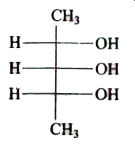 B
B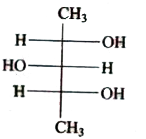 C
C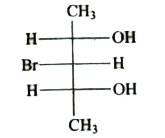 D
D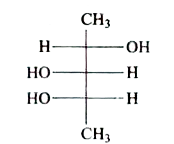
Presence of chiral center is not an essential condition to show optical isomerism. Essential condition is, compound should show non-superimposable mirror image.
Allenes do not contain chiral center but show optical isomerism when different groups are attached on double bonded carbons.
Biphenyls also show optical isomerism when both rings are perpendicular to each other and any ring should not contain plane of symmetry.
Which of the following biphenyl compounds is optically active?A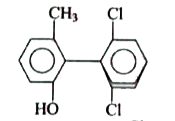 B
B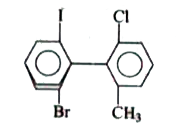 C
C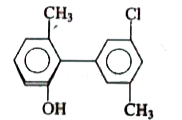 DAll are correct
DAll are correctPresence of chiral center is not an essential condition to show optical isomerism. Essential condition is, compound should show non-superimposable mirror image.
Allenes do not contain chiral center but show optical isomerism when different groups are attached on double bonded carbons.
Biphenyls also show optical isomerism when both rings are perpendicular to each other and any ring should not contain plane of symmetry.
Which of the following compounds can be resolved in enantiomeric form?A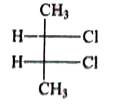 B
B C
C D
D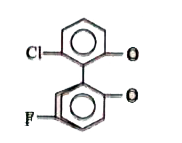
Which of the following compounds can non-superimposable mirror images?
View SolutionWhich of the following is responsible for the inability of meso compound to show optical activity?
View SolutionSubstance A is 1:1 mixture of two compounds I and II:
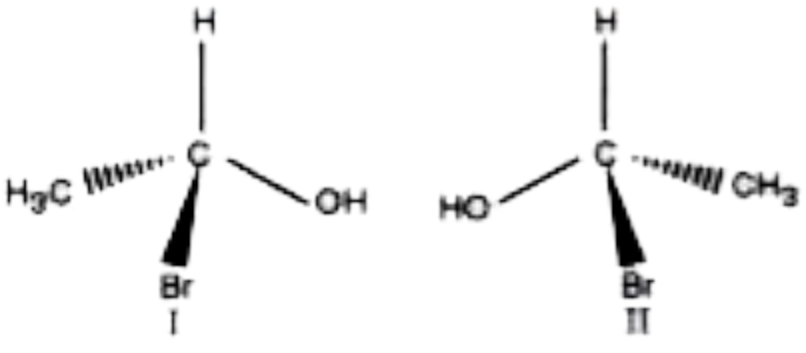
Will the mixture show optical activity ?
View SolutionRead the paragraph carefully and answer the questions given below it,
Stereo//space isomerism in coordination compounds
Gcometrical isomerism: Exhibited by square planer and octahedral complexes (not by tetrahedral complexes because relative positions are similar). If opposite positions have similar groups, it is trans, otherwise it is cis,
Optical isomerism: Shown when mirror image is non-superimposable. Cis-isomer shows but trans isomer does not
QHow many geometrical isomers are possible for the square planar complex[Pt(NO2)(Py)(NH3)(NH2OH)]NO2
View SolutionPresence of chiral center is not an essential condition to show optical isomerism. Essential condition is, compound should show non-superimposable mirror image.
Allenes do not contain chiral center but show optical isomerism when different groups are attached on double bonded carbons.
Biphenyls also show optical isomerism when both rings are perpendicular to each other and any ring should not contain plane of symmetry.
Which of the following compounds is optically inactive?
View Solution
